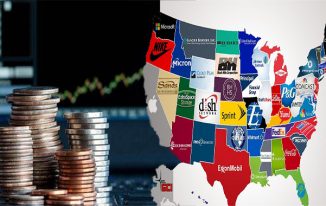Are you wondering how to invest in the best US stocks? If you are, read this article to discover how to rank US stocks based on market cap, earnings growth, and return on equity. Listed below are the most important metrics to look at when evaluating stocks. Hopefully, you’ll gain a new perspective on investing! We are constantly learning about the most promising and profitable companies, and you can be an informed investor!
S&P 500 index
The S&P 500 index ranks US companies by market cap. While the weighting of these stocks varies widely, they are meant to represent the health of the entire market. If Microsoft stocks move 10%, that can mean hundreds of billions of dollars. Conversely, if The Gap stock moves 10%, that can mean a few hundred million. This illustrates the disruption that a 10% move can cause to an economy.
The criteria for inclusion in the S&P 500 index are strict. The companies listed in the index must have a market capitalization of $14.6 billion, be highly liquid, and have at least 10% of their shares traded on the public market. The public float is the number of shares in a company that are publicly traded, excluding shares held by company insiders and institutions. Companies that are not headquartered in the United States aren’t eligible, but they must be listed on the New York Stock Exchange, Nasdaq, or Investors Exchange to be considered.
Companies ranked by market cap
If you’re a fan of stock market information, you might be interested in seeing how US stocks are ranked by their market caps. The Forbes list ranks stocks on a variety of metrics, including sales growth, return on equity, and earnings per share. This list is based on data as of November 4, 2021. For reference, the latest data is available for companies that are publicly traded on NASDAQ. For more information, see the Forbes top 100 ranking.
US stocks are ranked by their market caps, which are determined by multiplying the total number of outstanding shares by the current stock price. These companies are the towering behemoths of the business world, like Apple and Google. These companies are also the roofs of the USA economy. A glance at the list shows the largest US companies and their market caps. While this list can be overwhelming, it’s important to keep in mind that you might not want to invest your entire portfolio in just one company.
Companies ranked by earnings growth
The latest US stocks ranked by earnings growth report shows that nine of the eleven sectors reported positive results. These include Energy, Materials, Industrials, Financials, and Consumer Discretionary. The report is based on the company’s earnings growth and returns on equity. The report also considers the last year’s data to be more relevant. The companies with the highest earnings growth rate are those that are projected to generate the highest return on investment.
The EPS Rating ranks stocks from 99 (best) to 1 (worst) based on the earnings growth rate. The best stocks typically have an EPS rating of 95 or higher and rank in the top 5% of US stocks ranked by earnings growth. Another method is the SMR Rating, which ranks companies based on sales growth, return on equity, and profit margins. Companies with an SMR Rating of A are in the top 20% of all US stocks.
Companies ranked by return on equity
Return on equity (ROE) is defined as net income divided by the common stockholders’ equity. Return on equity can be further broken down into three components: net profit margin, asset turnover, and financial leverage. The first two measures indicate how efficient a firm’s assets are. Low asset turnover can adversely affect the return on equity. The third measure reflects the level of risk. When assessing a company’s risk profile, return on equity should be high.
In a recent report, Goldman Sachs set a year-end price target of 2,850 for the S&P 500, which is about 5% higher than the historical correlation between ROE and P/B. This suggests the index should be worth at least 2,714 as of March 29, implying 17.6% ROE. The analysts expect even greater outperformance in the coming years. Similarly, JPMorgan Chase (JPM) has a long history dating back to 1799, when the company was chartered to provide the city of New York with clean water.













